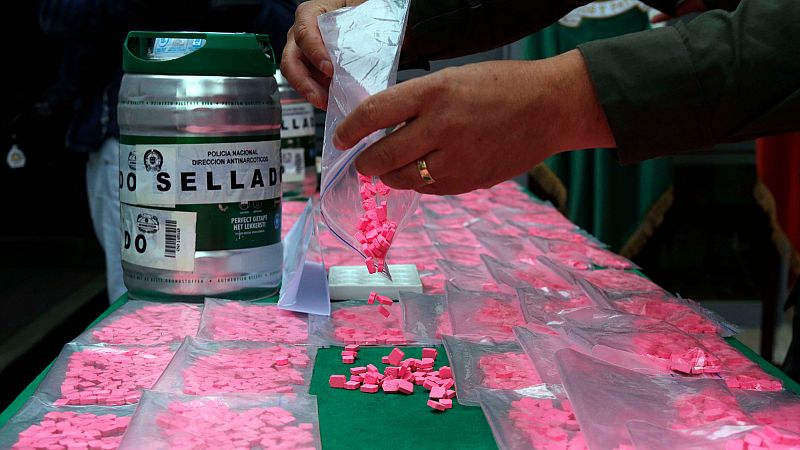
The largest-ever European wastewater analysis project has revealed an increase in MDMA, cocaine, and amphetamine use in 128 cities across 26 different countries.
The study, conducted by the SCORE group, an EU-wide network of sewage analysts, and the European Union Drugs Agency (EUDA), examined the drug-taking behaviours of approximately 68.8 million people by examining their waste.
According to EU data, 87 million adults have used illicit drugs at least once in their lifetime.
Cannabis and cocaine are the most widely used illegal drugs in the EU. Use of substances such as MDMA (also known as molly or ecstasy), heroin and other opioids, psychedelic substances and synthetic drugs are on the rise, however.
Wastewater samples were analysed for traces of five stimulant drugs -amphetamine, cocaine, methamphetamine, MDMA, and ketamine- as well as cannabis.
This approach allows scientists to estimate drug consumption within a community by measuring the levels of illicit drugs and their metabolites excreted in urine.
The study highlights that while a "relatively stable" pattern of cocaine use was observed between 2011 and 2015 in most cities, 2016 marked a turning point, with consumption increasing annually in most locations since then.
Cocaine use remains highest in western and southern European cities, with Belgium, the Netherlands, and Spain reporting the highest figures.
The 2024 data revealed further increases in cocaine residues in most cities, with 39 of 72 recording higher levels compared to the previous year.
In Belgium, sewage analysis in Brussels and Antwerp showed an increase from 2023.
In Brussels, the daily consumption of cocaine per thousand inhabitants is estimated to be 1186.34 milligrams in 2024, almost double than of 2023 at 598.22mg. The study pinpoints Saturday as the day of the week with higher concentrations.
Belgium is also one of the countries with the highest consumption of MDMA together with Czechia, the Netherlands, and Portugal.
Looking at longer-term trends, in most cases the loads of MDMA, also known as ecstasy, increased between 2011 and 2016 and have fluctuated after this.
The analysis also shows that the consumption of this stimulant is greater during the weekend, reflecting "the predominant use of ecstasy in recreational settings".
The cannabis exception
Cannabis remains the most widely used illicit drug, with an estimated 22.8 million users last year. However, unlike other drugs analysed, most cities recorded a decline in cannabis consumption in 2024 compared to previous years.
The analysed wastewater indicates that cannabis use is more prevalent in southern and central Europe, especially in Spain, the Netherlands, and Portugal.
Currently, possession and consumption are illegal in most countries, however, nine tolerate certain practices, and cannabis is legal under certain conditions in Germany, Luxembourg, and Malta.
In its 2024 drug report, the European Drug Agency stated that, while the current dynamic public and policy debate on how cannabis should be regulated is likely to continue in Europe, "it is unclear what direction future European policies will take".







